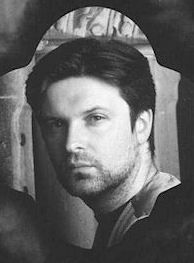
MacMillan's "Seven Last Words" Beyond Words
There are really no words to describe James MacMillan’s cantata “Seven
Last Words from the Cross,” featured work on the Vocal Arts Ensemble/Cincinnati
Chamber Orchestra’s May 2 concert in the Immaculate Heart of Mary Chapel at
Summit Country Day School in Hyde Park.

The program itself had a time line, beginning with Johannes Brahms’ “Nänie” (“Lament”), based on an ode by Schiller dealing with Greek myths about the death of beauty too soon. Danish composer Bo Holten’s 1976 “Tallis Variations” on a Lament by Thomas Tallis compares and contrasts early and modern music, while Englishman John Tavener’s 1999 “The Bridegroom,” treating the biblical allegory of the wise and foolish virgins, represents so-called “mystical minimalism.”
It was the annual collaboration by the VAE and CCO and the Chapel was full. Acoustically, it was about as much as the venue could handle, with the 35-piece CCO, including brasses for the Brahms (strings only for the other three works), and 12-24 singers. Consequently, the smaller and less polyphonic works fared best, and when they did, the effect was lovely, especially in Summit’s Gothic Chapel, with its elaborately carved altar and handsome stained glass windows.
“Verily, I say unto
you today thou shalt be with me in Paradise” had some of the most transcendent
music this side of Olivier Messiaen. As
if from the depths, the basses intoned the Good Friday versicle “Ecce lignum
crucis” (“Behold the wood of the cross”).
The response (“Venite adoremus”) was accompanied by viola arpeggios and
a high, sweet violin solo (CCO concertmaster Anna Reider) that wove its way throughout
the movement like a silver thread.
“Eli, Eli, lama sabachtani” began in black, inky tones in the basses, growing shrill and strident as everyone joined in. At the end, it all sank back into the abyss.
“I thirst” was stark and spare, a declaration of unfathomable suffering, with loud whispers by the men and tremolo strings. The dissonant hammer chords that opened “It is finished” (compare Hermann's “Psycho”) conjured nails cutting into flesh as the lament from the first movement returned, and the chorus sang another Good Friday Responsory (“My eyes were blind with weeping”).
Almost without a break, there were three loud exclamations of “Father,” followed by “into thy hands I commend my spirit.” Then, in what is perhaps the most extraordinary moment of the cantata, the chorus dropped out. The instruments followed alone, with a long lamentation that thinned out gradually to a pair of violins sounding a soft, halting minor second, like a last breath.
It was the VAE’s final concert of the season. The CCO, led by music director Mischa Santora, closes its season June 6 in Corbett Auditorium at the University of Cincinnati College-Conservatory of Music with music of George Gershwin featuring pianist Michael Chertock and Schoenberg’s “Transfigured Night.”